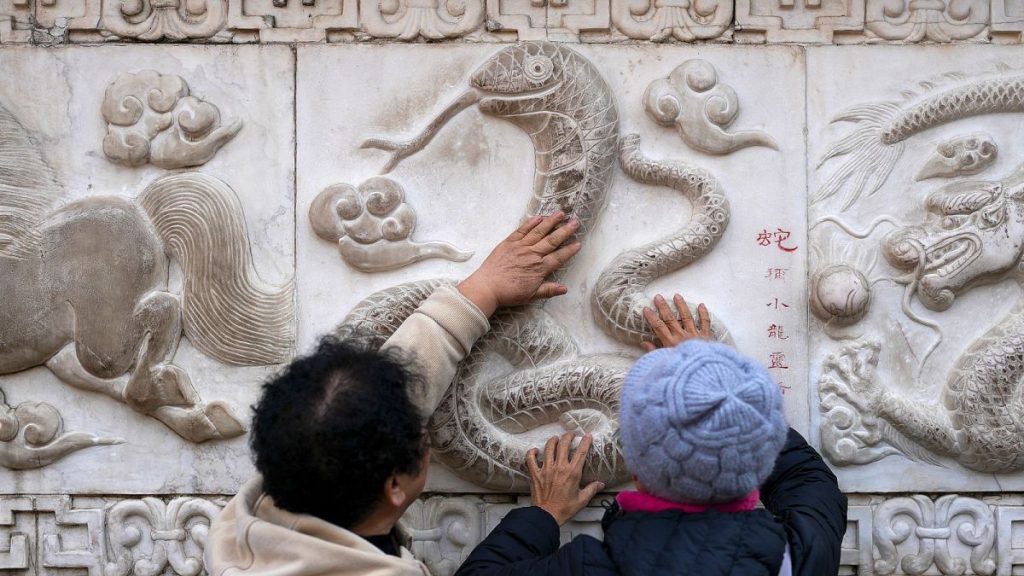The Lunar New Year, commencing with the Year of the Snake, is a time of vibrant celebrations and rich cultural traditions across Asian communities worldwide. The snake, the sixth animal in the Chinese zodiac, carries symbolic weight, representing wisdom, intuition, charm, and slyness. Often associated with the fire element, the Year of the Snake is believed to be a period of transformation and personal growth, encouraging reflection and shedding old habits much like a snake sheds its skin. Contrary to negative connotations sometimes associated with snakes, those born under this sign are considered intelligent and graceful. The year 2025 is specifically the year of the Wood Snake, adding a layer of creativity and charm to the inherent characteristics of the snake. The combination of animal signs and the five elements – earth, metal, water, wood, and fire – creates a 60-year cycle, highlighting the intricacies of the Chinese zodiac.
Culinary traditions play a significant role in Lunar New Year festivities, particularly the preparation of snake soup in Hong Kong. Chau Ka-ling, a seasoned chef, carries on the legacy of her father’s restaurant, Shia Wong Hip, once famed for its live snake dishes. Now, due to health concerns, frozen snake meat sourced from Southeast Asia is used, a shift prompted by the 2003 SARS outbreak. Despite this change, the process of making snake soup remains laborious, involving boiling, deboning, and stewing the meat with various ingredients like chicken, pork, ham, fungus, and mandarin orange peel. The resulting soup, rich in protein and low in fat, is a popular winter dish, although demand decreases during summer months. The dwindling number of snake soup shops in Hong Kong reflects a challenging landscape for traditional culinary practices.
The symbolism of the snake extends beyond culinary practices, shaping beliefs and interpretations associated with the Lunar New Year. The year is seen as a time for personal reflection and positive transformation, embracing the wisdom and intuition associated with the snake. This emphasis on self-improvement and shedding negative patterns aligns with the cyclical nature of the zodiac, representing a fresh start and an opportunity for growth. The Wood Snake, specifically for those born in 2025, carries the added connotation of creativity and resourcefulness, potentially leading to innovative endeavors and personal breakthroughs. This nuanced understanding of the snake’s symbolism enriches the cultural significance of the Lunar New Year.
Celebrating the Lunar New Year involves a range of customs and traditions, each imbued with symbolic meaning. In Indonesia, puppet displays accompanied by drummers draw crowds, with the tradition of placing red envelopes filled with money into the puppet’s mouth. The red color holds paramount importance, symbolizing good luck and prosperity, while the red envelopes, known as hóngbāo, represent blessings and good fortune. The evolution of this custom in the 21st century sees digital red envelopes exchanged alongside traditional paper ones, reflecting the integration of technology into cultural practices. Exchanging greetings such as “春节快乐” (Chūn Jié Kuài Lè) in Mandarin, meaning “Happy Spring Festival,” and “恭喜发财” (Gong hei fat choi) in Cantonese, meaning “Congratulations and be prosperous,” further underscores the joyous atmosphere of the celebration.
The challenges faced by traditional practices, such as the declining number of snake soup shops in Hong Kong, highlight the importance of preserving cultural heritage. Chau Ka-ling’s dedication to continuing her family’s business underscores the resilience and commitment needed to maintain these traditions. As older generations retire and fewer young people enter the industry, the future of such specialized culinary practices remains uncertain. This underscores a broader theme of balancing tradition with evolving societal trends, seeking ways to ensure that cultural heritage is not lost amidst modernizing influences. The preservation of these practices, often tied to family legacies and cultural identity, becomes a crucial endeavor in ensuring the continuity of traditions for future generations.
The Lunar New Year celebrations, centered around the Year of the Snake, encapsulate a rich tapestry of cultural significance, culinary traditions, and symbolic interpretations. The snake, with its associated attributes of wisdom, intuition, and transformation, sets the tone for a year of reflection and personal growth. From the intricate process of preparing snake soup to the vibrant puppet displays and the exchange of red envelopes, each element of the celebration carries symbolic weight, reflecting values of prosperity, good fortune, and renewal. As communities worldwide usher in the Lunar New Year, these traditions serve as a reminder of the enduring power of cultural heritage and the importance of passing down these customs to future generations, ensuring their continued vibrancy and relevance.














